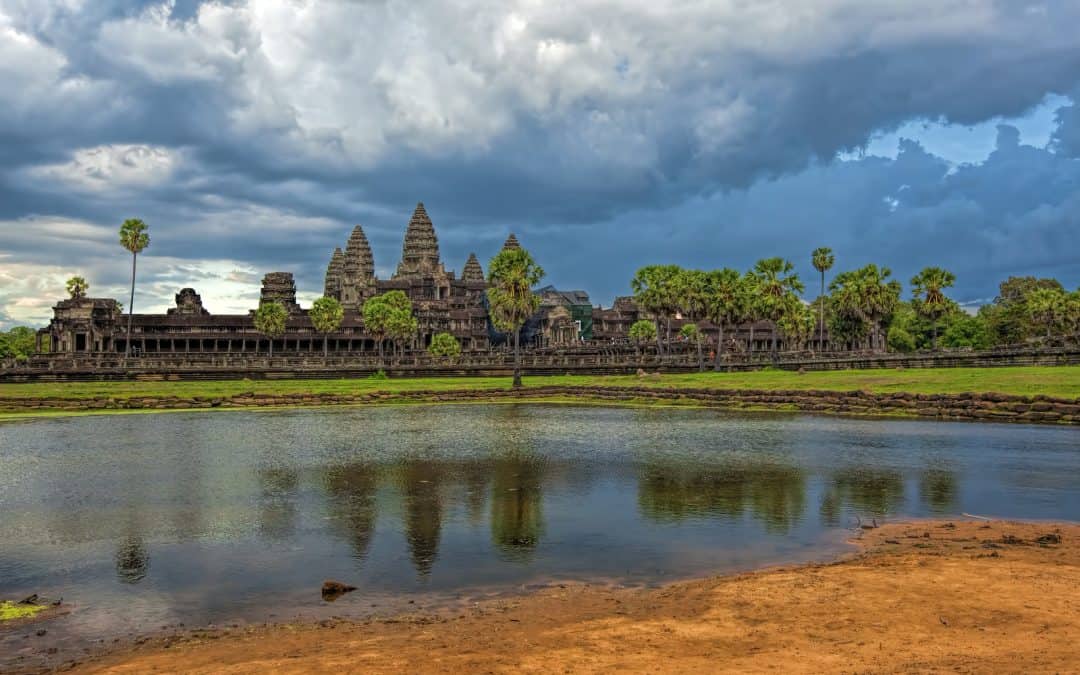Angkor Wat stands as a powerful symbol of Cambodian history and culture.
The expansive temple complex contains the largest religious monument in the world and represents the greatest achievements of the ancient Khmer Empire.
Beyond its architectural grandeur, Angkor Wat holds deep spiritual, cultural, and economic significance for the Cambodian people.
We’re going to discuss the multifaceted importance of Angkor Wat and what it represents for Cambodia.
Key Takeaways
- Angkor Wat is a symbol of Cambodia’s cultural heritage, representing the once-great Khmer Empire and serving as a testament to the country’s ancient culture and majestic temples.
- Angkor Wat is of historical significance as the world’s largest religious monument and the seat of the powerful Khmer Empire, containing artifacts that tell the story of the Khmer civilization.
- The economic impact of Angkor Wat is significant, as it is a popular tourist destination that brings in revenue, boosts the country’s GDP, and provides jobs and economic development for Cambodia.
- Angkor Wat holds religious significance with its temples dedicated to Hindu gods and goddesses, reflecting the deep cultural legacy and preserving a spiritual heritage through its iconic architecture and complex symbolism.
A Symbol of Ancient Culture
You can see the symbol of ancient culture in Angkor Wat, making it an important part of Cambodia’s history.
Its majestic temples are a testament to the once-great Khmer Empire, providing insight into the cultural influence it had over the region.
Steeped in mystery and tradition, its architectural marvels are a source of pride for the nation, and a reminder of the richness of its past.
From the intricate carvings to the grand scale of its structures, Angkor Wat is a must-see for anyone seeking to understand the country’s culture and heritage.
Representation of Cambodian Pride
Visiting Angkor Wat is a representation of Cambodian pride, as its impressive ruins evoke a sense of national identity. The UNESCO World Heritage Site stands as a reminder of the nation’s rich cultural heritage, with its intricate architecture and intricate carvings.
Its popularity among tourists has had a major impact on the Cambodian economy, generating much-needed revenue for the country. Yet, the government has also taken steps to ensure its cultural preservation, by educating visitors on the importance of respecting the site’s legacy.
Angkor Wat serves as a significant source of pride for the people of Cambodia, a symbol of their proud nation’s rich and diverse culture.
Cultural Significance
You’ll gain an appreciation for Cambodia’s culture and history when you visit Angkor Wat, as it holds immense significance for the country.
It’s a powerful symbol of Cambodian pride and a great source of cultural symbolism.
Its many ritual practices, carvings, and sculptures are a testament to the country’s rich history.
Angkor Wat is a place of great cultural importance to Cambodians, and it’s a reminder of the strength and resilience of the Cambodian people.
Historical Significance
Exploring Angkor Wat, you can gain a deeper understanding of Cambodia’s history, as it’s a place of great historical significance.
It’s a symbol of the country’s cultural heritage, representing its spiritual roots and national identity.
- It’s home to the world’s largest religious monument, the Angkor Wat temple.
- It was the seat of the powerful Khmer Empire for centuries.
- It contains many artifacts that tell the story of the Khmer civilization.
- It’s a UNESCO World Heritage Site, preserving its historical importance for generations.
- It’s a reminder of the strength and resilience of the Cambodian people.
Economic Impact
By visiting Angkor Wat, you can also gain an understanding of the economic impact it has had on Cambodia, as its popularity has brought in much needed tourism revenue.
Visitor spending has greatly benefited the local economy, providing jobs and helping to boost the country’s GDP.
Tourists flock to the area, spending money on souvenirs, accommodations, restaurants, and more. This influx of revenue has been essential to Cambodia’s economic development, and is a major factor in the country’s continued success.
The significance of Angkor Wat as a major tourist destination can’t be understated.
Religious Significance
You can gain insight into the religious significance of Angkor Wat by exploring its many temples, which are dedicated to the Hindu gods and goddesses.
Its spiritual value is evident in its statues and carvings, which depict Hindu mythology and illustrate beliefs still practiced today.
Angkor Wat also holds a deep cultural legacy, serving as a reminder of Cambodia’s past and a symbol of its religious identity. Its iconic architecture reflects the grandeur of the Khmer Empire.
Its bas-reliefs tell the story of the country’s spiritual journey. Its intricate sculptures pay homage to the gods and goddesses. Its sacred spaces offer a place of reflection and peace. Its complex symbolism preserves a spiritual heritage.
Conclusion
Angkor Wat encapsulates Cambodia’s cultural heritage and national identity.
Its architectural majesty pays tribute to the country’s historic roots, while its spiritual symbolism connects to long-held beliefs.
Angkor Wat also drives economic prosperity through tourism.
For the Cambodian people, Angkor Wat represents a wellspring of national pride that both honors the past and inspires the future.
The enduring significance of this sacred site continues to shape Cambodia’s national consciousness.



